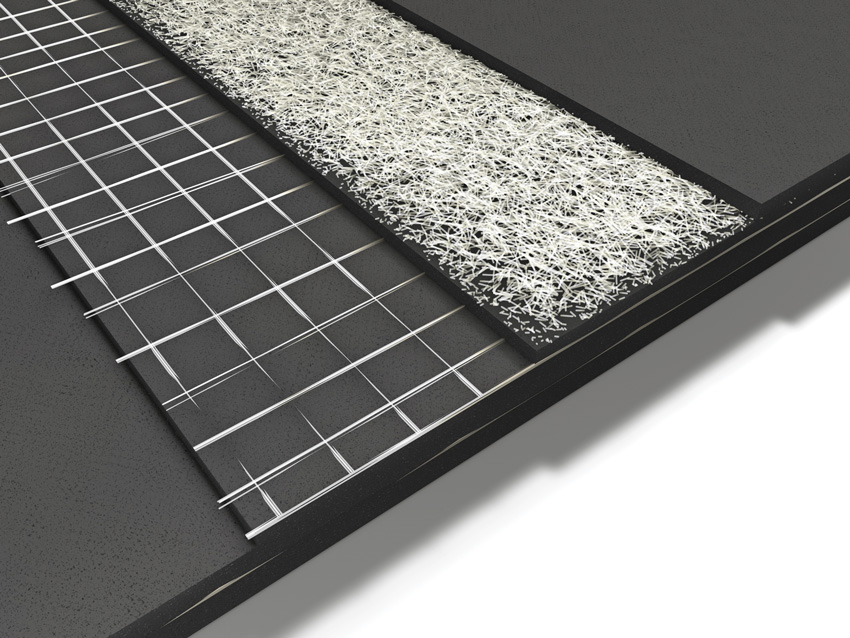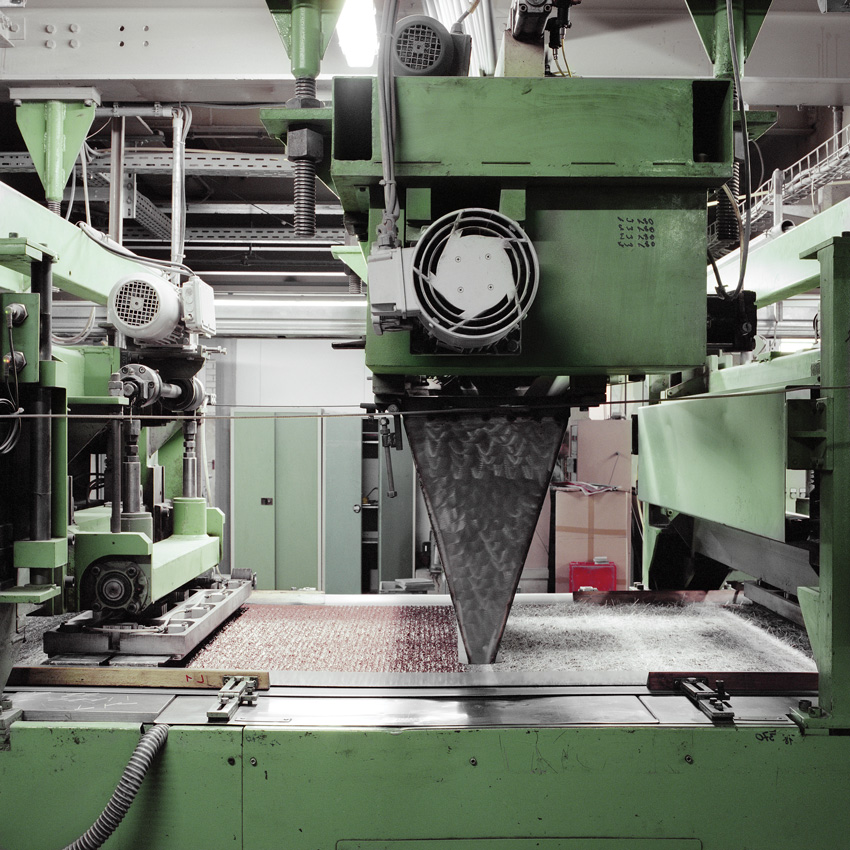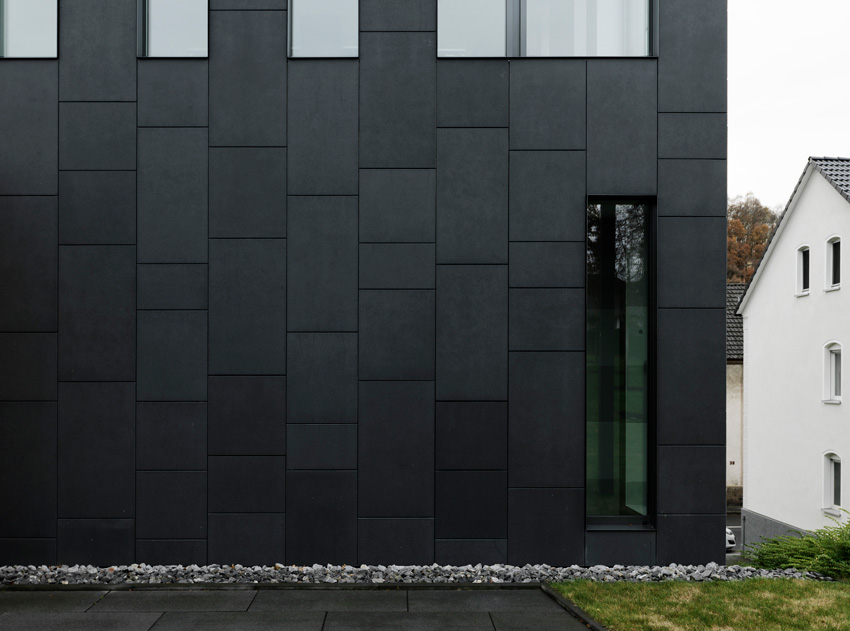The Use of Extruded Concrete in Rainscreen Applications
Common Rainscreen Materials
As part of a water mitigation system, rainscreens first and foremost need to repel water. However, they also need to be durable enough to withstand other environmental forces such as wind, UV radiation, and extreme heat and cold.
Many types of siding or cladding materials can be part of an effective rainscreen system. Designers must weigh a number of factors when specifying this material, including the desired aesthetics, fire resistance, sustainability, installation requirements, lifetime maintenance, and project budget.
Architects and designers have a wide range of options for materials that can serve as part of a rainscreen assembly while also contributing to an aesthetically beautiful building envelope. Some of the materials commonly used for rainscreens include wood, aluminum composite (ACM), stone, cement board and fiber cement, high-pressure laminate (HPL), reconstituted stone, terra cotta, ceramic tile, glass reenforced plastic (GRP), and fibrous concrete. More recently, extruded concrete has emerged as an effective and desirable option. In this course, we will focus on wood-plastic composite, cement board and fiber cement, cast-in-place concrete, and extruded concrete.
Wood-Plastic Composite
As the name implies, wood-plastic composite (WPC) is a composite material comprised of plastic and wood fibers that are bonded together. Available as panels or planks, the material is often designed to mimic conventional wood cladding and encapsulated in a durable polymer shell. As with wood, it can be painted and is a cost-effective alternative for some applications. WPC is often touted as a material that boasts the aesthetic benefits of wood but without the maintenance.
WPC is resistant to fire, rot, and insect infestations, and when made with recycled wood fibers and plastics, it can be a sustainable choice. It is also a durable material with a 30-year lifespan if properly maintained.
Wood-plastic composite products are manufactured by mixing finely ground wood particles with heated thermoplastic resins. The material is typically extruded, but it can be injection molded. Depending on the manufacturer, varying amounts of recycled wood and plastic components are used.
Cement Board and Fiber Cement
Cement boards are large, thin sheets made with cement and reinforcing fibers. Cement bonded particle board is reinforced with wood flakes and typically comes in 4-by-8 and 3-by-5 panels. This versatile material, often called “backerboard,” can be nailed or screwed to building structures to serve as a substrate for tile floors, kitchen counters, and backsplashes. It also can be used in building exteriors as a base for stucco, or it can serve as the exposed siding. As a rainscreen material, cement board offers durability, strength, and moisture resistance, although it is relatively heavy.
Increasingly popular as a durable siding choice, fiber cement is a mixture of cement and sand reinforced with cellulose fibers. It comes in panels and planks of varying widths, and at least one manufacturer offers prepainted products. Fiber cement siding is a durable, low-maintenance siding choice for rainscreen applications, but it is relatively heavy and requires specialized tools.
Fiber cement is manufactured by combining wet cement, sand, and cellulose fibers into a slurry. The mixture is then pressed, dewatered, and cured through an autoclaving process. The material can be imprinted with wood grain or other patterns.
Cast-in-Place Concrete
Cast-in-place concrete is a mixture of aggregate and sand that is delivered ready mixed in an unhardened state to the project site. The concrete is poured into molds, which often utilize rebar or other materials to reinforce the finished product. The particles are bonded together with cement. In addition to being used for building foundations, cast-in-place concrete can be used to construct beams, columns, floors, roofs, and walls. This type of concrete is very strong and durable. It is often touted as a sustainable solution because materials are usually locally sourced, and unused product can be saved and reused for other projects. Cast-in-place concrete also has high thermal mass, and it can improve a building’s energy performance by creating an air barrier. The material’s light color helps reduce the heat island effect by reflecting rather than absorbing heat—a beneficial feature when using cast-in-place concrete for an exterior rainscreen.
Extruded Concrete
Extruded concrete typically refers to thin concrete panels that are reinforced with glass fiber. Also called glass fiber-reinforced concrete, the material usually includes a ratio of 90 percent sand and 10 percent glass fibers, plus concrete additives and pigments. Panels are colored all the way through and available in dimensions up to 177 inches long and 48 inches wide.
Extruded concrete panels are ultra-thin and lightweight. With a typical thickness of 13 millimeters (about half an inch), they are half the thickness of cast concrete. The material is exceptionally strong, lightweight, and durable, making it an ideal choice for rainscreen applications. It even can be formed into shapes that create sophisticated architectural facades, which also provide shading and other energy-performance benefits. The panels are noncombustible and appropriate for fire-resistant assemblies.
Extruded concrete panels are made by laying down several 3-millimeter-thick layers of concrete layered and mixed with glass fiber mesh and short strands of glass fibers. The extrusion process can quickly create very thin and strong concrete panels in a wide range of colors and surface treatments.

Image courtesy of Rieder North America
The glass fibers embedded in the concrete panels give them a high strength-to-weight ratio, enabling thin, lightweight panels.

Photo courtesy of Rieder North America
During the manufacturing process, chopped glass fibers are embedded into the concrete mix.
Comparing Rainscreen Materials
The goal of a rainscreen is not only to prevent moisture from entering the building shell but also to provide an internal means of water drainage and evaporation if water does get through. A good rainscreen will accomplish the “4 Ds”: deflect water, drain moisture, dry any water that has penetrated the cladding, and be durable enough to withstand the elements over time without deteriorating.
Rainscreens must be strong enough to withstand extreme weather conditions, yet they must also be as light as possible to minimize the amount of additional framing support required. In addition, they need to offer a reasonable amount of design flexibility. Let’s take a look at how the commonly used materials introduced earlier stack up when it comes to the most important considerations of design and performance.
Water mitigation: Wood-plastic composite, fiber cement, cast-in-place concrete, and extruded concrete are all highly moisture resistant. The main issue with cement board is the cellulose wood fiber, which can wick water into the core and cause failure; this is also a fire issue. Because extruded concrete uses glass fiber, it does not absorb water and does not burn.
Fire resistance: One of the downsides of wood-plastic composite products is that they are not fire resistant unless treated. Some manufacturers include fire retardants in their WPC products; however, these chemicals raise concerns about health and environmental impacts. All of the concrete-based products are either noncombustible or fire resistant and can be part of fire-resistant assemblies.
Health and toxicity: Some wood-plastic composite products contain pollvinyl chloride, or PVC, which releases dioxins during production and when incinerated. Dioxins are known carcinogens and are linked to a range of other health issues, including birth defects. Many fiber cement products contain crystalline silica, which is a known carcinogen. The other concrete-based products, including extruded concrete, do not contain this material.
Weight: Material weight is an important consideration that impacts both transportation cost and laborers performing the installation. Different panel sizes and thicknesses may be appropriate for different projects.
Cast-in-place concrete differs from the other materials as it is delivered in a ready-mix form and poured on-site. However, the cured product is heavy, and molds are seldom thinner than 1 inch thick.
Strength: As with any exterior cladding, the material used in rainscreen assemblies must be able to withstand high winds, wind-driven rain and hail, and even wind-borne debris impacts. The material also should be able to withstand temperature fluctuations and freeze-thaw cycles without cracking.
By some strength measures, wood-plastic composites are inferior to wood; however, the material gets high marks for compressive strength. Concrete-based materials are very strong; however, cast-in-place concrete can degrade if the internal rebar comes in contact with water and begins to rust. Concrete also can develop pressure cracks when placed under heavy loads. Here extruded concrete has an advantage. The embedded glass fibers give extruded concrete panels an extremely high strength-to-weight ratio; the material is also highly ductile and stable.
Durability: Exterior cladding is exposed continually to the elements, yet it must perform for the life of the building. Wood-plastic composite and all of the concrete-based products score high in durability, especially compared to wood; however, as mentioned above, rust can compromise the integrity of cast-in-place concrete.
Design flexibility and aesthetics: Exterior cladding contributes to a building’s aesthetic. Consequently, rainscreen materials should ideally perform their functions but also include a range of choices when it comes to color, shape, and surface texture.
WPC products can convincingly mimic wood and can be painted or stained, but without the required maintenance of the real thing. Similarly, fiber cement can be embossed with wood grain but also comes in a smooth finish, depending on the desired aesthetic. The material comes in panels or planks, accommodating a range of architectural styles. Cement board and cast-in-place concrete both can be polished, sandblasted, or honed smooth for different surface textures, and cast-in-place concrete can be poured into many shapes.
Made of mineral-based raw materials, extruded concrete has an organic aesthetic that is compatible with many architectural styles. Many standard and custom colors and various surface treatments are possible, all of which influence its character. Extruded concrete can be formed into flat panels and/or three-dimensional shapes, giving designers a wide range of options for creating dynamic and attractive facades.

© Ditz Fejer
Extruded concrete panels are typically colored using ferric oxide-based colors and natural additives; the panels are subsequently brushed or sandblasted, rendering them with an organic aesthetic that blends in well with natural landscapes.









